Debonding Detection of Reinforced Concrete (RC) Beam with Near-Surface Mounted (NSM) Pre-stressed Carbon Fiber Reinforced Polymer (CFRP) Plates Using Embedded Piezoceramic Smart Aggregates (SAs)
Abstract
:1. Introduction
2. Monitoring Principle
2.1. Piezoceramic Smart Aggregates
2.2. Wavelet Packet-Based Active Sensing Method
3. Experimental Study
3.1. Specimen Details and Fabrication
3.2. Instrumental Setup
3.3. Experimental Procedures
4. Experimental Results
4.1. Load Characteristics of the Specimens
4.2. Time Domain and Frequency Domain Analysis
4.3. Wavelet Packet-Based Damage Index
5. Conclusions
- The debonding cracks only appear in the CFRP reinforcement region. The non-pre-stressed bonding section can prolong the bond stress-transmission length of the CFRP-concrete interface. The increase in the contact area between the CFRP and the concrete improves the stress distribution of the concrete. The analysis results show that there is an effective non-pre-stressed CFRP bond length (300 mm), which can improve the load characteristics of the test specimen and enhance the bearing capacity and deformation performance of the test specimen.
- Wavelet packet theory has been successfully applied to the real time monitoring of the debonding damage process of the RC beams with NSM pre-stressed CFRP plates. It can be seen from the time domain and frequency domain analysis that the tension end region cracks earlier than the bond end region with the increase of load. Stress concentration at the end of CFRP leads to debonding damage at the early loading stage. This indicates the starting point of structural damage. It is shown that increasing the length of the non-pre-stressed CFRP bond can slow down the appearance and expansion of the crack. It can be judged from the damage index that increasing the contact area between CFRP and concrete affects the damage degree and bearing capacity of the non-pre-stressed CFRP bonding section; the existence of the non-pre-stressed CFRP bonding section affects the damage degree and bearing capacity of the tension end and the bond end region. Wavelet packet damage index has the ability to detect debonding crack initiation. After the occurrence of debonding cracks, the value of damage index increasing continuously monitors the development of debonding cracks.
- The active sensing approach based on SAs can monitor the occurrence and development of cracks for RC beams with NSM pre-stressed CFRP plates in real time. The experimental results show that it is feasible to use the active sensing method based on stress wave to monitor the debonding crack damage of the CFRP-concrete in real time.
6. Future Work
- ➢
- The long-term performance of RC beams with NSM pre-stressed CFRP plates, including the aging and durability of CFRP and adhesives, needs further study.
- ➢
- Effective and high-strength bonding and anchoring measures are studied to make the strength of CFRP material fully play.
- ➢
- Furthermore, the shrinkage and creep of concrete and adhesive, the creep of CFRP material and the influence of temperature characteristics on the creep performance of reinforced concrete beams were studied.
- ➢
- The overall durability of concrete beams strengthened with CFRP is a general concern. Due to the differences in physical properties, mechanical properties and other properties between the existing concrete beam material and the new reinforcement material, the durability evaluation of the existing concrete beam after reinforcement is not only different from the durability evaluation of the existing concrete beam but also different from the durability design of the new concrete beam, which makes the prediction of the durability of the reinforced concrete beam more complicated.
- ➢
- In order to provide a feasible design basis for the fatigue design of reinforced concrete beams, it is necessary to carry out a systematic study on the fatigue and other dynamic properties of concrete beams strengthened with CFRP.
- ➢
- In the case of a considerable number of experimental studies, it is necessary to use the numerical analysis method to carry out the numerical experimental research on the concrete beams strengthened by CFRP materials and to carry out the numerical simulation research on different combinations of concrete strength grade, reinforcement materials, mechanical properties, slotting size, clear distance between slots and so forth, so as to seek a reasonable and practical theoretical analysis method and design calculation formula.
- ➢
- On the basis of accurate structural analysis, it is absolutely necessary to study the reliability of reinforced structure, so that the two complement each other and the structural design method is perfected.
Author Contributions
Funding
Conflicts of Interest
References
- Zhou, L.; Zheng, Y.; Song, G.; Chen, D.; Ye, Y. Identification of the structural damage mechanism of BFRP bars reinforced concrete beams using smart transducers based on time reversal method. Constr. Build. Mater. 2019, 220, 615–627. [Google Scholar] [CrossRef]
- Tu, J.; Xie, H.; Gao, K.; LI, Z.; Zhang, J. Durability Prediction of GFRP Rebar Based on Elastic Modulus Degradation. Front. Mater. 2019, 6, 258. [Google Scholar] [CrossRef]
- Darain, K.; Jumaat, M.; Shukri, A.; Obaydullah, M.; Huda, M.; Hosen, M.; Hoque, N. Strengthening of RC beams using externally bonded reinforcement combined with near-surface mounted technique. Polymers 2016, 8, 261. [Google Scholar] [CrossRef] [PubMed] [Green Version]
- Saleem, M.U.; Qureshi, H.J.; Amin, M.N.; Khan, K.; Khurshid, H. Cracking Behavior of RC Beams Strengthened with Different Amounts and Layouts of CFRP. Appl. Sci. 2019, 9, 1017. [Google Scholar] [CrossRef] [Green Version]
- Peng, H.; Zhang, J.; Cai, C.S.; Liu, Y. An experimental study on reinforced concrete beams strengthened with prestressed near surface mounted CFRP strips. Eng. Struct. 2014, 79, 222–233. [Google Scholar] [CrossRef]
- Gribniak, V.; Tamulenas, V.; Ng, P.L.; Arnautov, A.K.; Gudonis, E.; Misiunaite, I. Mechanical behavior of steel fiber-reinforced concrete beams bonded with external carbon fiber sheets. Materials 2017, 10, 666. [Google Scholar] [CrossRef] [Green Version]
- Wang, L.; Dai, L.; Bian, H.; Ma, Y.; Zhang, J. Concrete cracking prediction under combined prestress and strand corrosion. Struct. Infrastruct. Eng. 2019, 15, 285–295. [Google Scholar] [CrossRef]
- Li, L.; Xia, Y.; Chen, G. Experimental and numerical studies of debonding monitoring of FRP shear-strengthened beams using EMI technique. J. Aerosp. Eng. 2018, 31, 04018048. [Google Scholar] [CrossRef]
- Yin, X.; Song, G.; Liu, Y. Vibration suppression of wind/traffic/bridge coupled system using multiple pounding tuned mass dampers (MPTMD). Sensors 2019, 19, 1133. [Google Scholar] [CrossRef] [Green Version]
- Huo, L.; Li, C.; Jiang, T.; Li, H.N. Feasibility study of steel bar corrosion monitoring using a piezoceramic transducer enabled time reversal method. Appl. Sci. 2018, 8, 2304. [Google Scholar] [CrossRef] [Green Version]
- Yin, X.; Liu, Y.; Song, G.; Mo, Y.L. Suppression of bridge vibration induced by moving vehicles using pounding tuned mass dampers. J. Bridg. Eng. 2018, 23, 04018047. [Google Scholar] [CrossRef]
- Ghiassi, B.; Verstrynge, E.; Lourenço, P.B.; Oliveira, D.V. Characterization of debonding in FRP-strengthened masonry using the acoustic emission technique. Eng. Struct. 2014, 66, 24–34. [Google Scholar] [CrossRef] [Green Version]
- Mahmoud, A.M.; Ammar, H.H.; Mukdadi, O.M.; Ray, I.; Imani, F.S.; Chen, A.; Davalos, J.F. Non-destructive ultrasonic evaluation of CFRP–concrete specimens subjected to accelerated aging conditions. NDT E Int. 2010, 43, 635–641. [Google Scholar] [CrossRef]
- Li, N.; Wang, F.; Song, G. New entropy-based vibro-acoustic modulation method for metal fatigue crack detection: An exploratory study. Measurement 2020, 150, 107075. [Google Scholar] [CrossRef]
- Tashan, J.; Al-Mahaidi, R. Investigation of the parameters that influence the accuracy of bond defect detection in CFRP bonded specimens using IR thermography. Compos. Struct. 2012, 94, 519–531. [Google Scholar] [CrossRef]
- Montiel-Zafra, V.; Canadas-Quesada, F.; Campos-Suñol, M.J.; Vera-Candeas, P.; Ruiz-Reyes, N. Monitoring the internal quality of ornamental stone using impact-echo testing. Appl. Acoust. 2019, 155, 180–189. [Google Scholar] [CrossRef]
- Feng, M.Q.; De Flaviis, F.; Kim, Y.J. Use of microwaves for damage detection of fiber reinforced polymer-wrapped concrete structures. J. Eng. Mech. 2002, 128, 172–183. [Google Scholar] [CrossRef] [Green Version]
- Yazdani, N.; Beneberu, E.; Riad, M. Nondestructive Evaluation of FRP-Concrete Interface Bond due to Surface Defects. Adv. Civ. Eng. 2019, 2019, 2563079. [Google Scholar] [CrossRef]
- Li, W.; Xu, C.; Ho, S.; Wang, B.; Song, G. Monitoring concrete deterioration due to reinforcement corrosion by integrating acoustic emission and FBG strain measurements. Sensors 2017, 17, 657. [Google Scholar] [CrossRef] [Green Version]
- Di, B.; Wang, J.; Li, H.; Zheng, J.; Zheng, Y.; Song, G. Investigation of bonding behavior of FRP and steel bars in self-compacting concrete structures using acoustic emission method. Sensors 2019, 19, 159. [Google Scholar] [CrossRef] [Green Version]
- Hsieh, C.T.; Lin, Y. Detecting debonding flaws at the epoxy–concrete interfaces in near-surface mounted CFRP strengthening beams using the impact-echo method. NDT E Int. 2016, 83, 1–13. [Google Scholar] [CrossRef]
- Kharkovsky, S.; Ryley, A.C.; Stephen, V.; Zoughi, R. Dual-polarized near-field microwave reflectometer for noninvasive inspection of carbon fiber reinforced polymer-strengthened structures. IEEE Trans. Instrum. Meas. 2008, 57, 168–175. [Google Scholar] [CrossRef] [Green Version]
- Song, G.; Wang, C.; Wang, B. Structural health monitoring (SHM) of civil structures. Appl. Sci. 2017, 7, 789. [Google Scholar] [CrossRef]
- Wang, Z.; Chen, D.; Zheng, L.; Huo, L.; Song, G. Influence of axial load on electromechanical impedance (EMI) of embedded piezoceramic transducers in steel fiber concrete. Sensors 2018, 18, 1782. [Google Scholar] [CrossRef] [Green Version]
- Lei, M.; Li, W.; Luo, M.; Song, G. An automatic extraction algorithm for measurement of installed rock bolt length based on stress wave reflection. Measurement 2018, 122, 563–572. [Google Scholar] [CrossRef]
- Wang, F.; Ho, S.C.M.; Huo, L.; Song, G. A novel fractal contact-electromechanical impedance model for quantitative monitoring of bolted joint looseness. IEEE Access 2018, 6, 40212–40220. [Google Scholar] [CrossRef]
- Xu, K.; Ren, C.; Deng, Q.; Jin, Q.; Chen, X. Real-time monitoring of bond slip between GFRP bar and concrete structure using piezoceramic transducer-enabled active sensing. Sensors 2018, 18, 2653. [Google Scholar] [CrossRef] [Green Version]
- Wang, Y.; Li, X.; Li, J.; Wang, Q.; Xu, B.; Deng, J. Debonding damage detection of the CFRP-concrete interface based on piezoelectric ceramics by the wave-based method. Constr. Build. Mater. 2019, 210, 514–524. [Google Scholar] [CrossRef]
- Mahdavi, G.; Nasrollahzadeh, K.; Hariri-Ardebili, M.A. Optimal FRP Jacket Placement in RC Frame Structures Towards a Resilient Seismic Design. Sustainability 2019, 11, 6985. [Google Scholar] [CrossRef] [Green Version]
- Liu, Y.; Zhang, M.; Yin, X.; Hei, C.; Wang, L. Interface Debonding Detection of Precast Segmental Concrete Beams (PSCBs) Using Piezoceramic Transducer-Based Active Sensing Approach. Math. Probl. Eng. 2019, 2019, 8725021. [Google Scholar] [CrossRef]
- Lotrakul, P.; San-Um, W.; Takahashi, M. The Monitoring of Three-Dimensional Printer Filament Feeding Process Using an Acoustic Emission Sensor. In Sustainability Through Innovation in Product Life Cycle Design; Springer: Singapore, 2017; pp. 499–511. [Google Scholar]

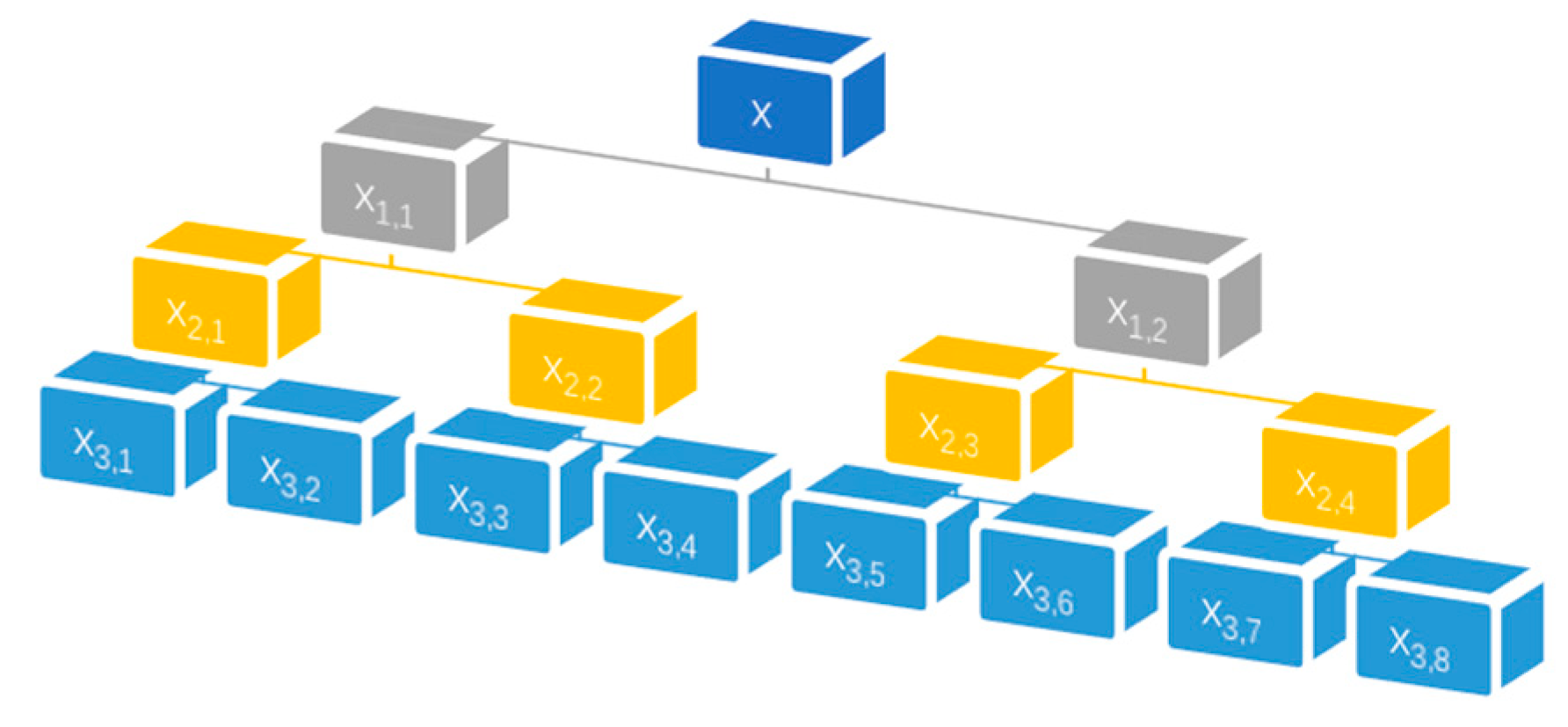
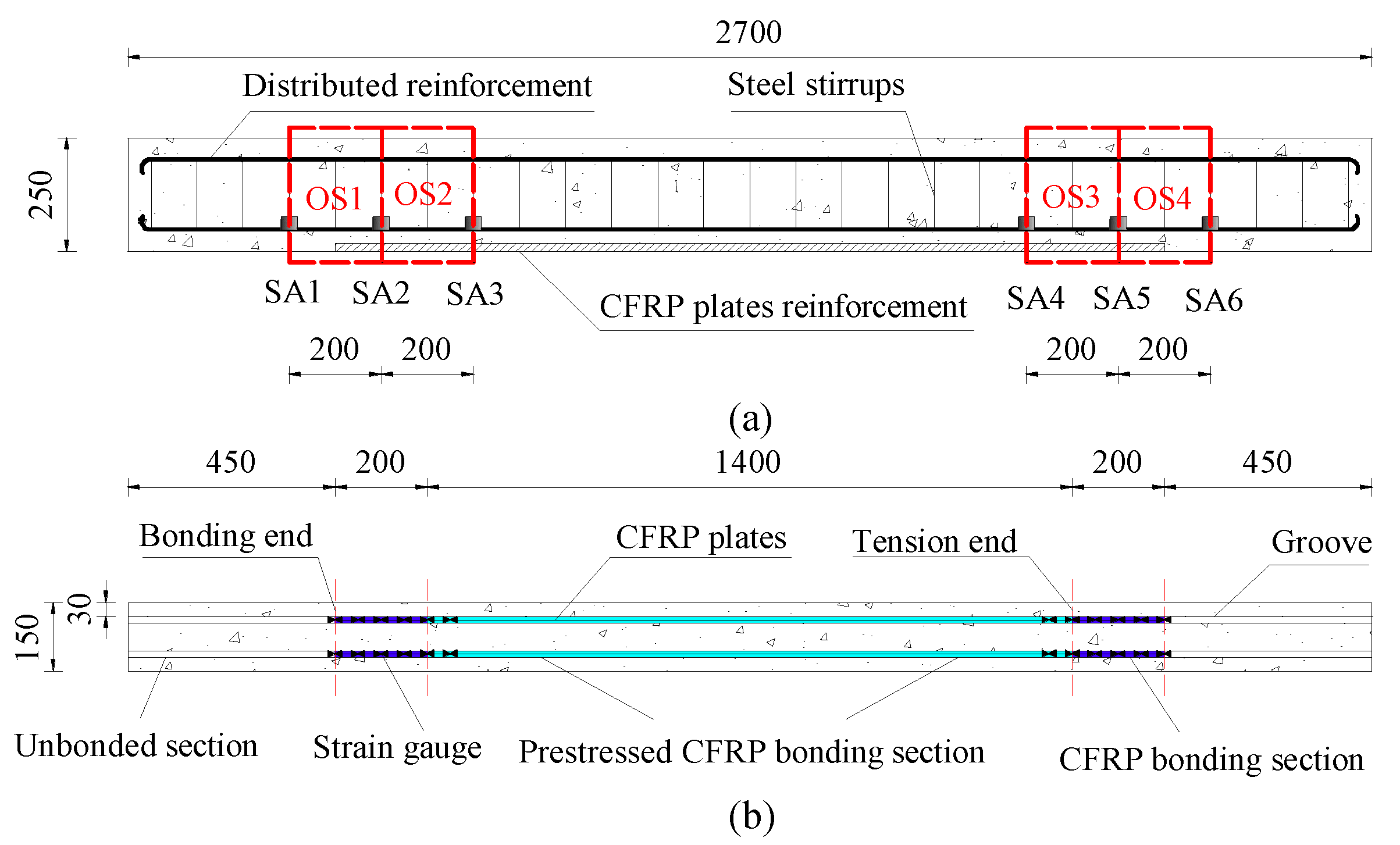
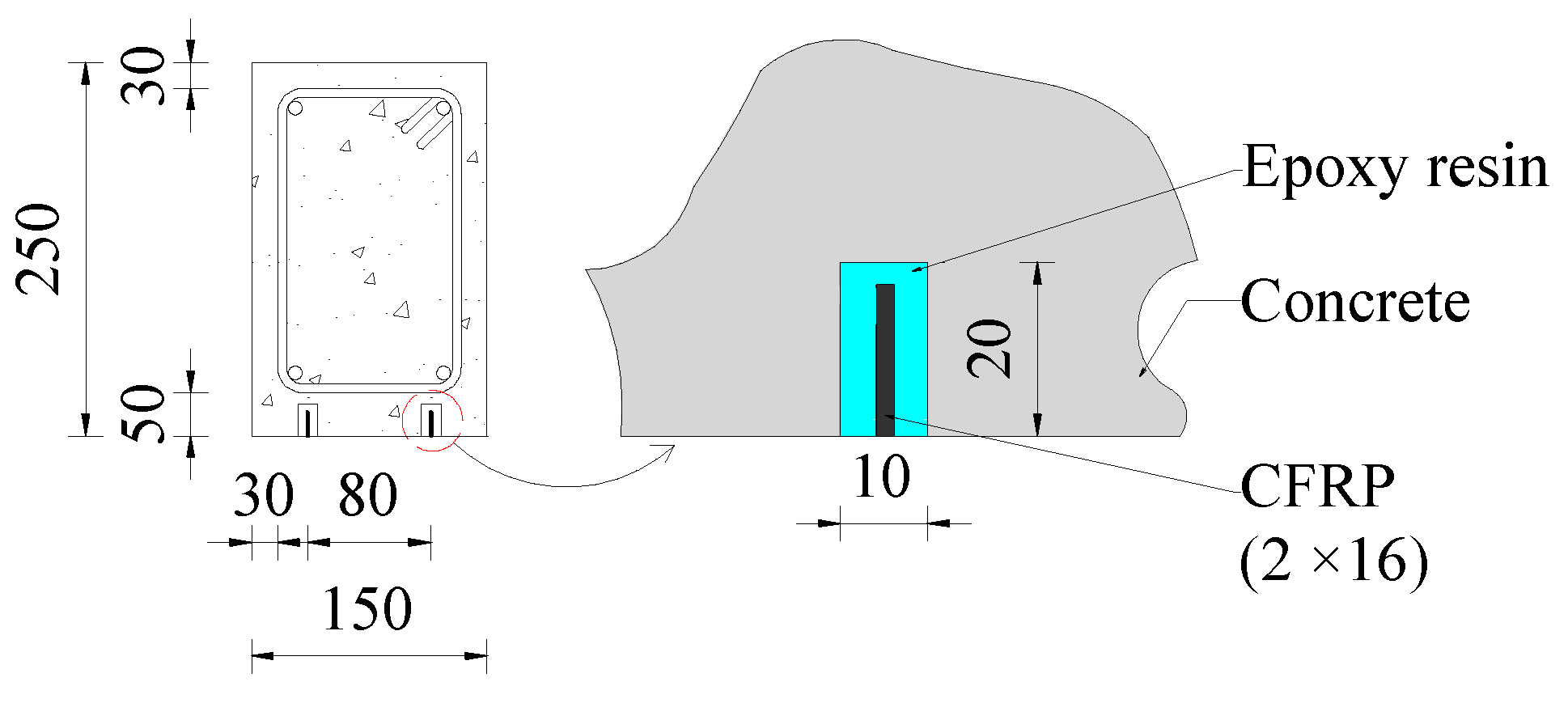
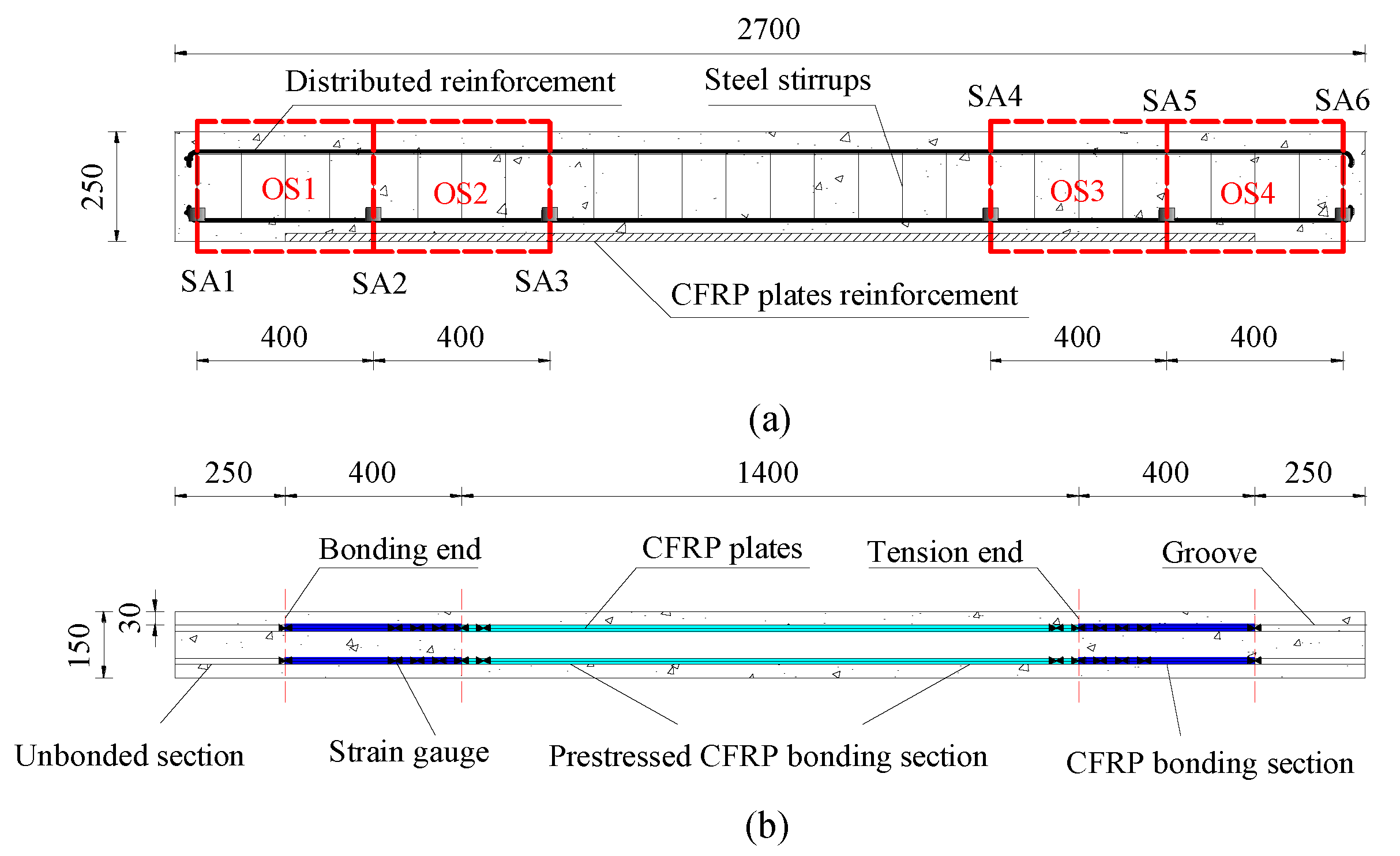
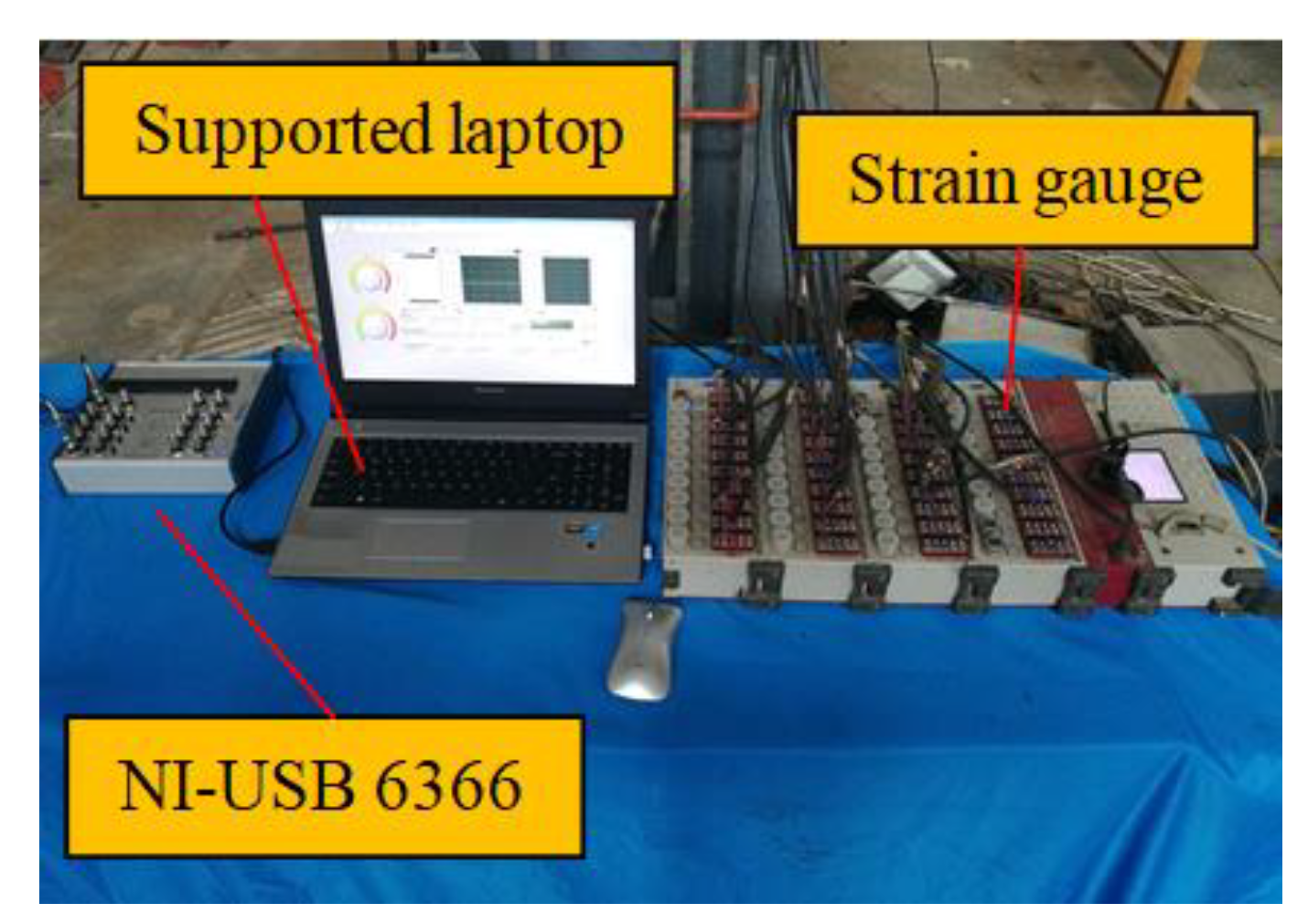
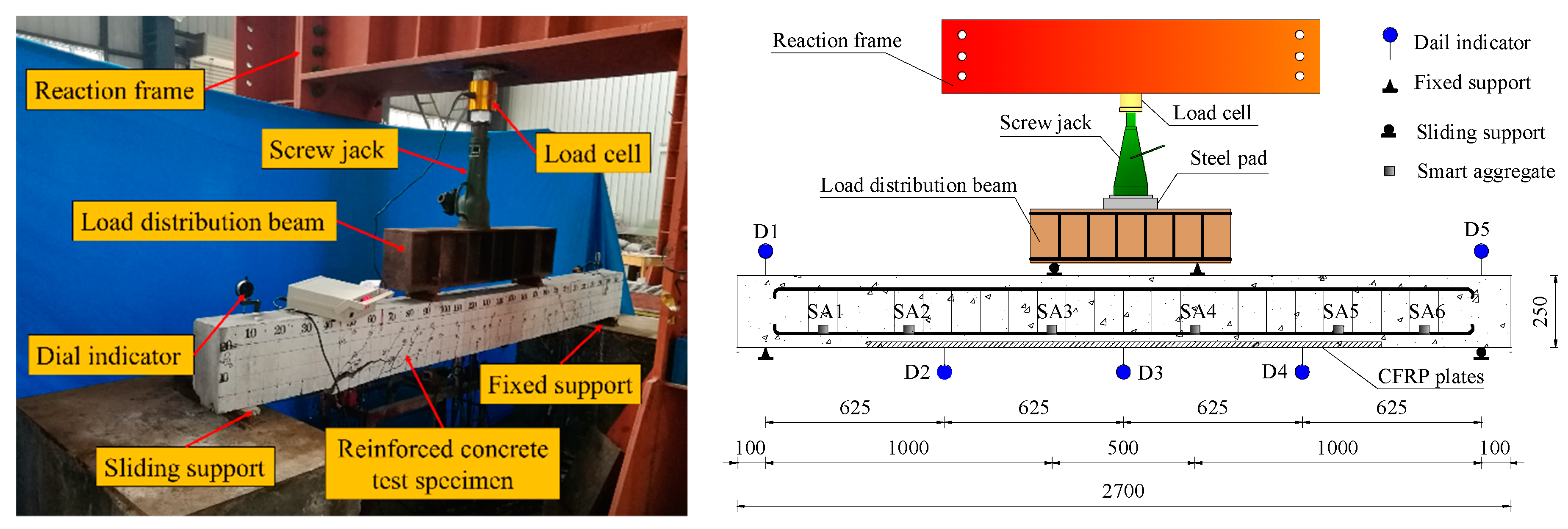


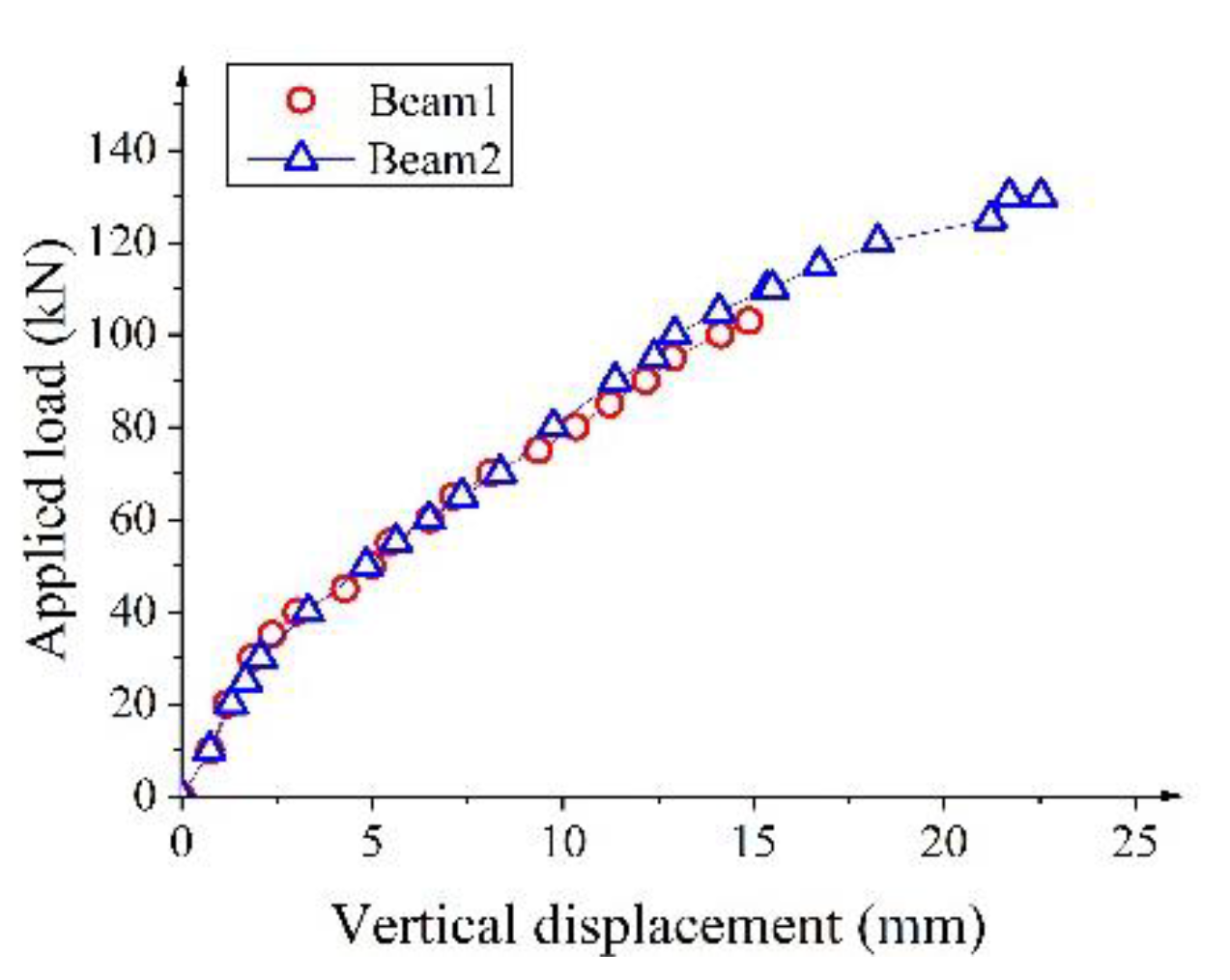
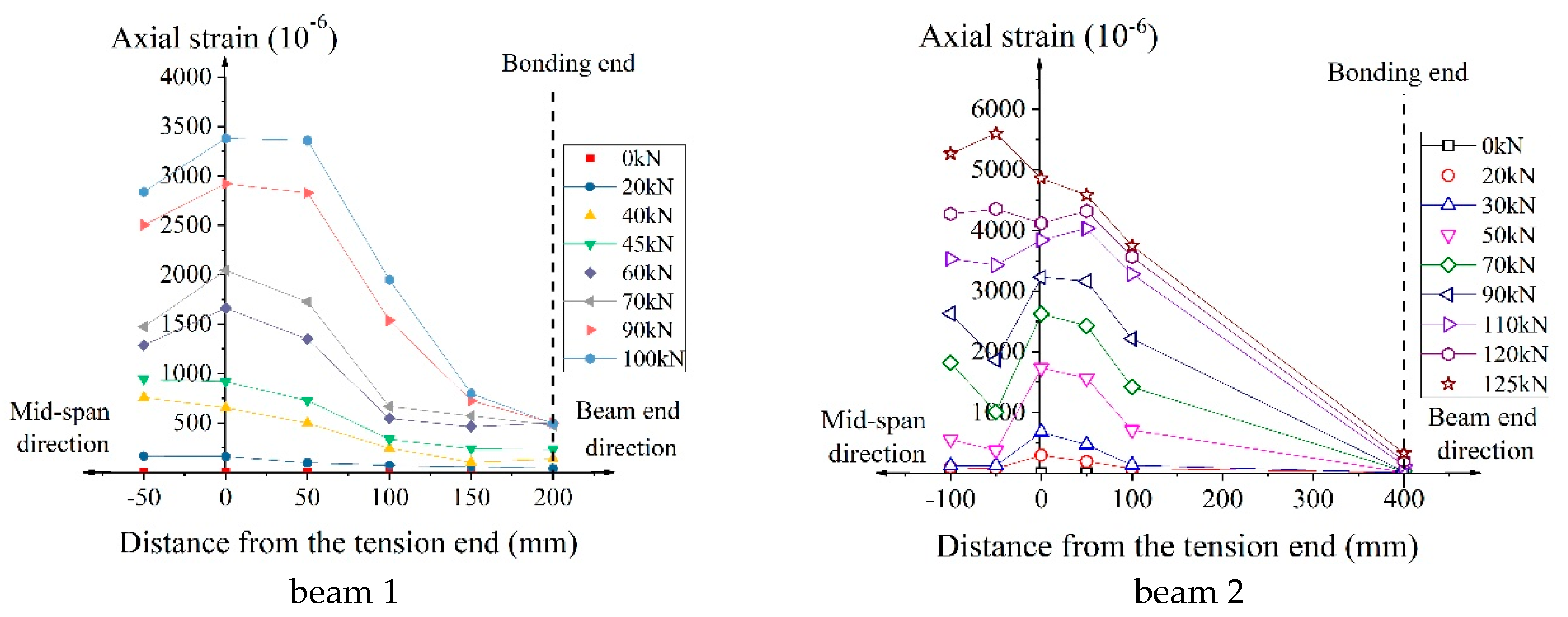
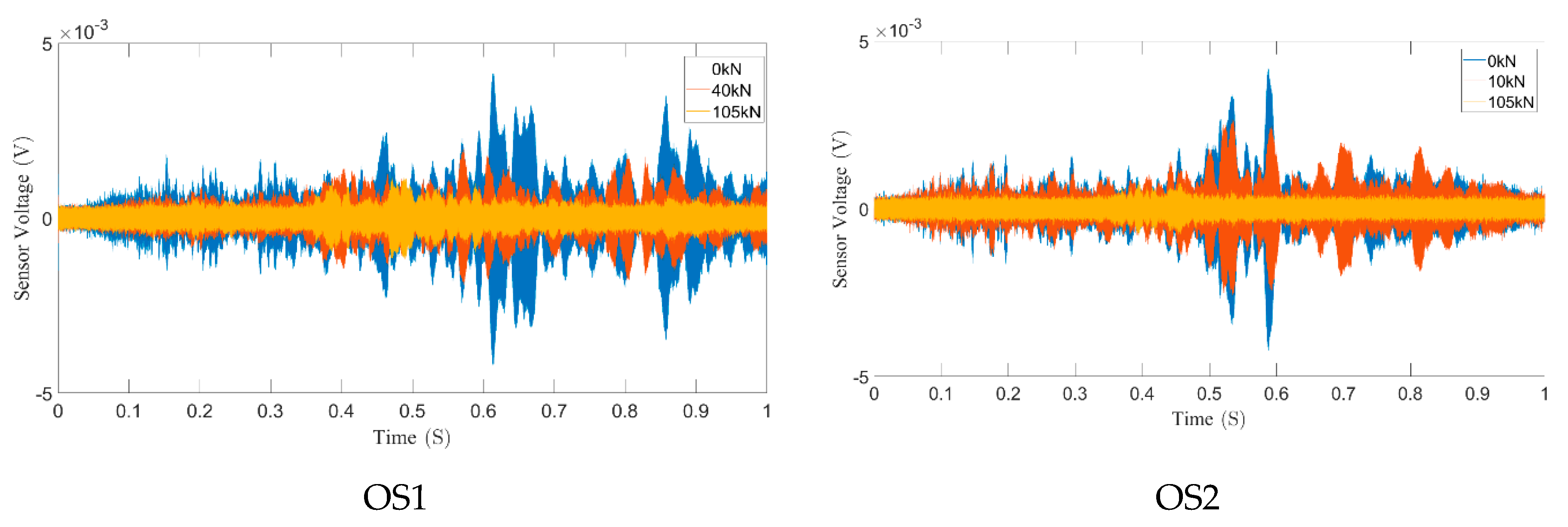

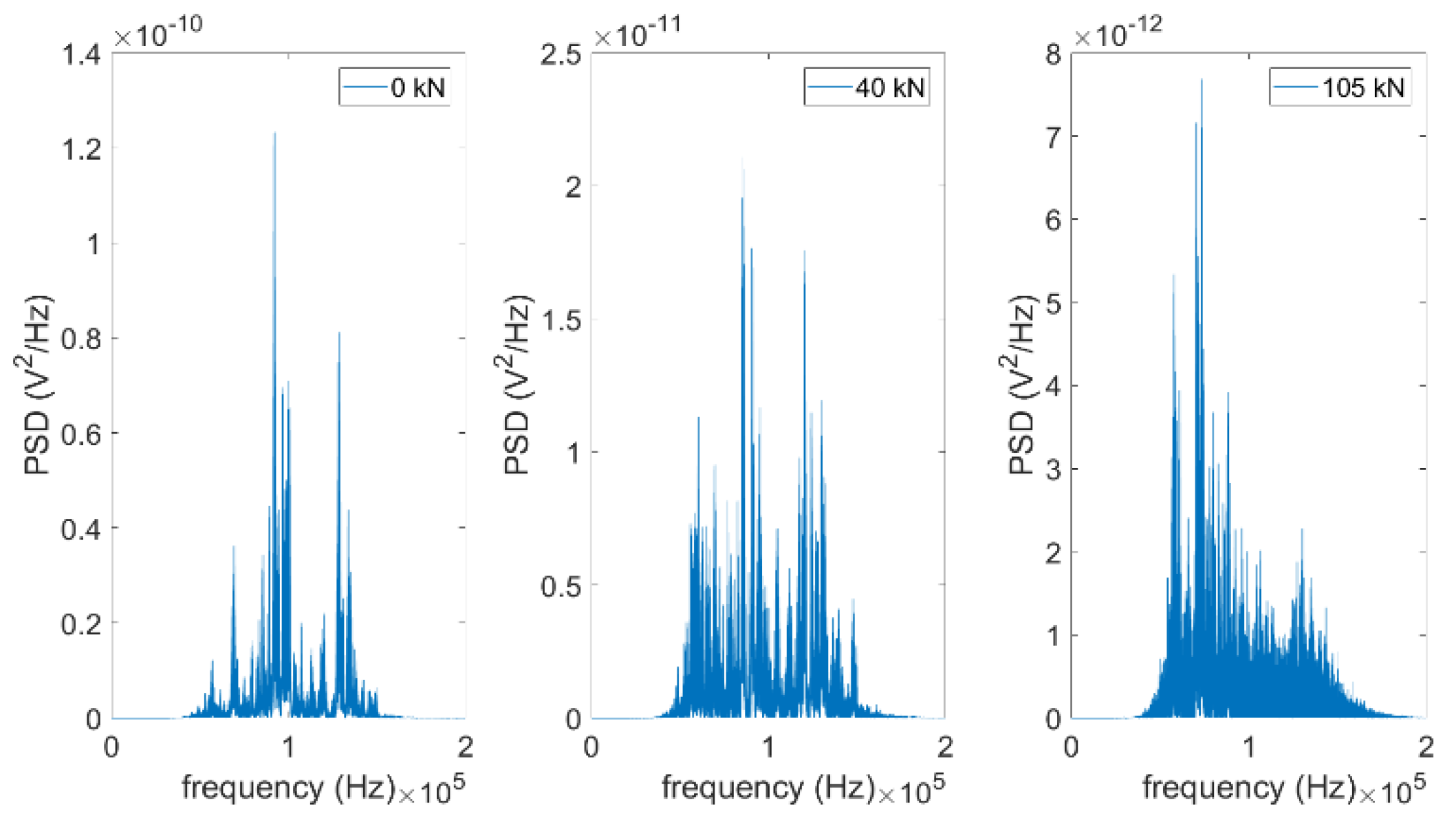
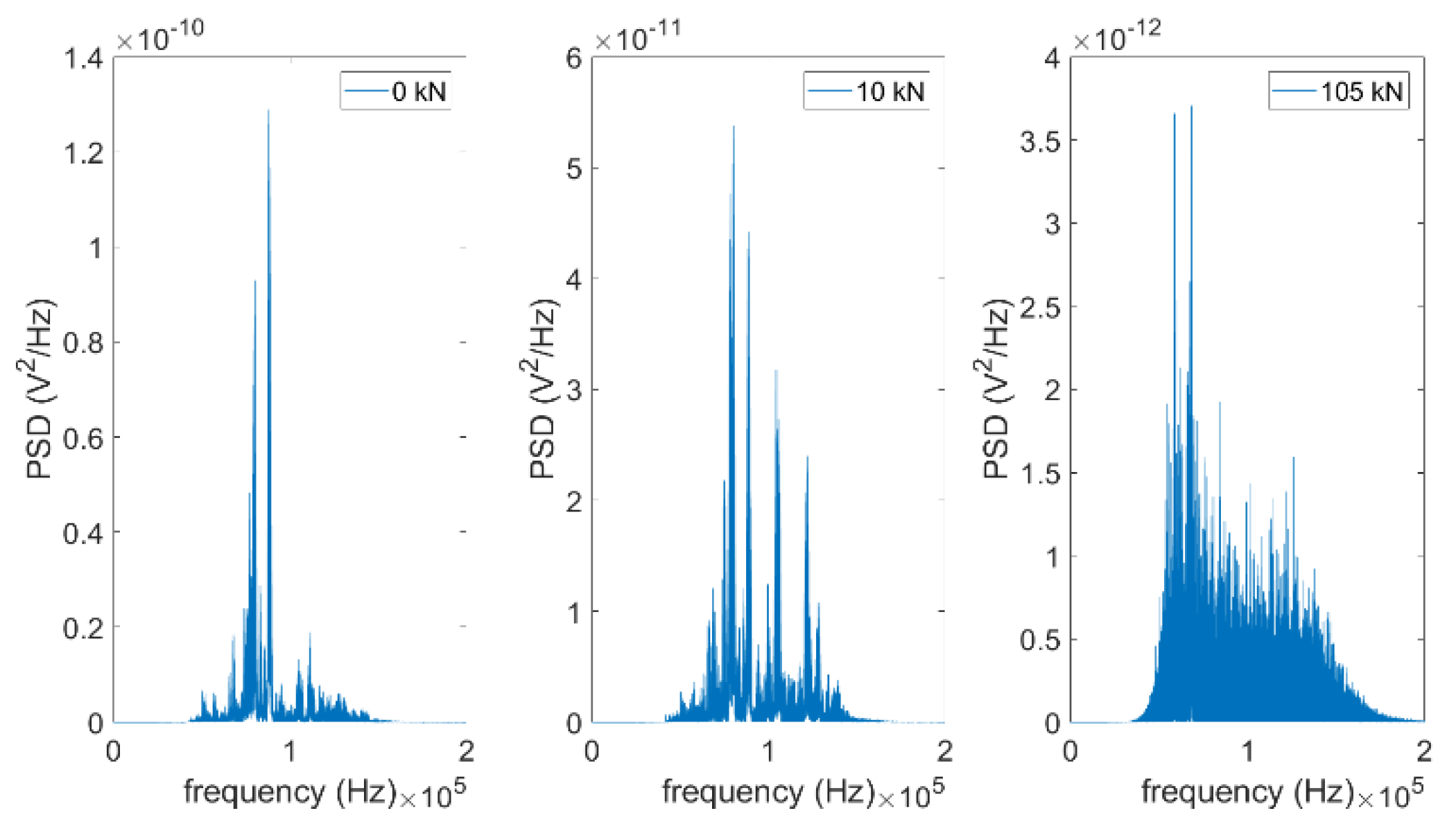
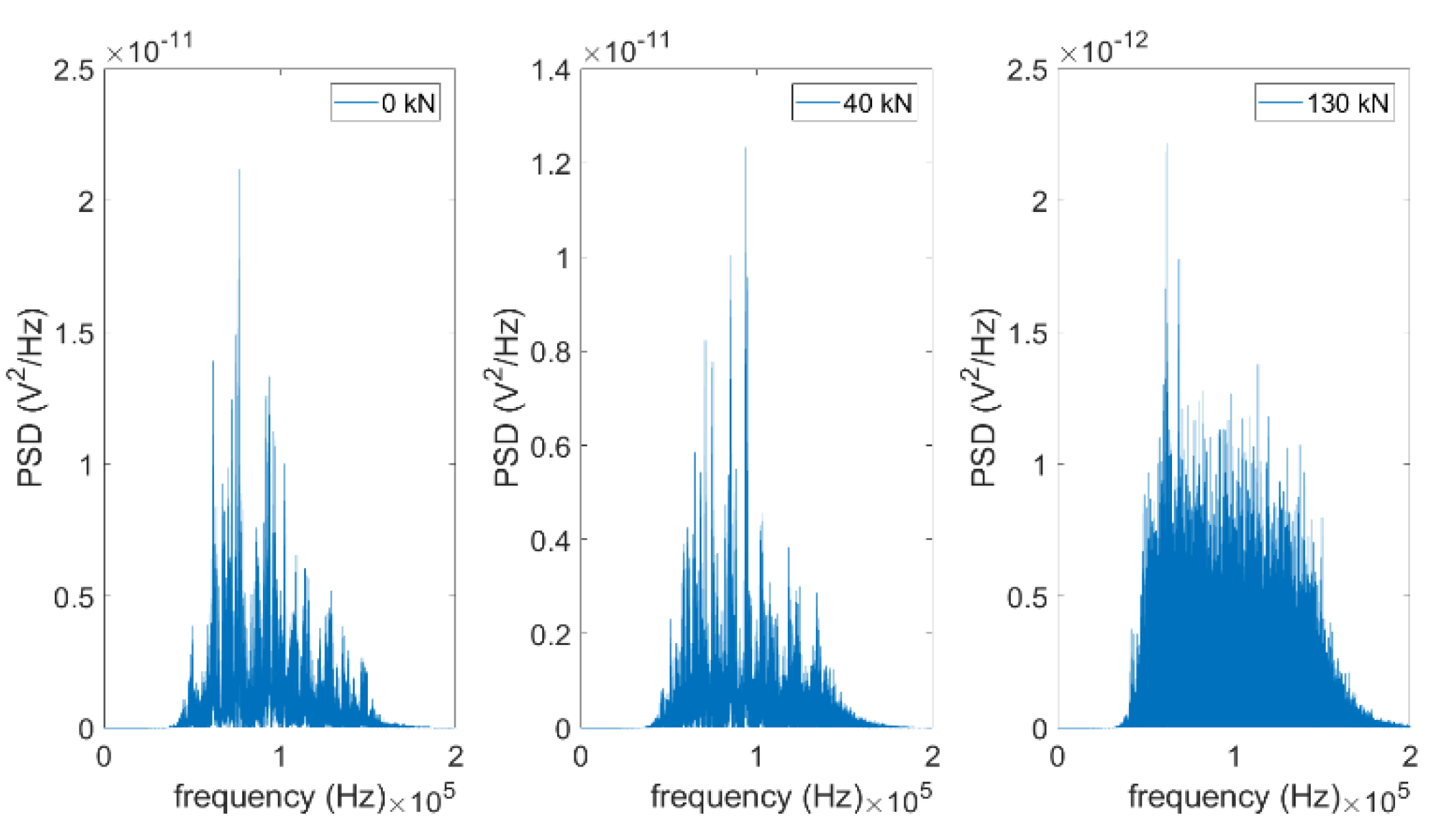
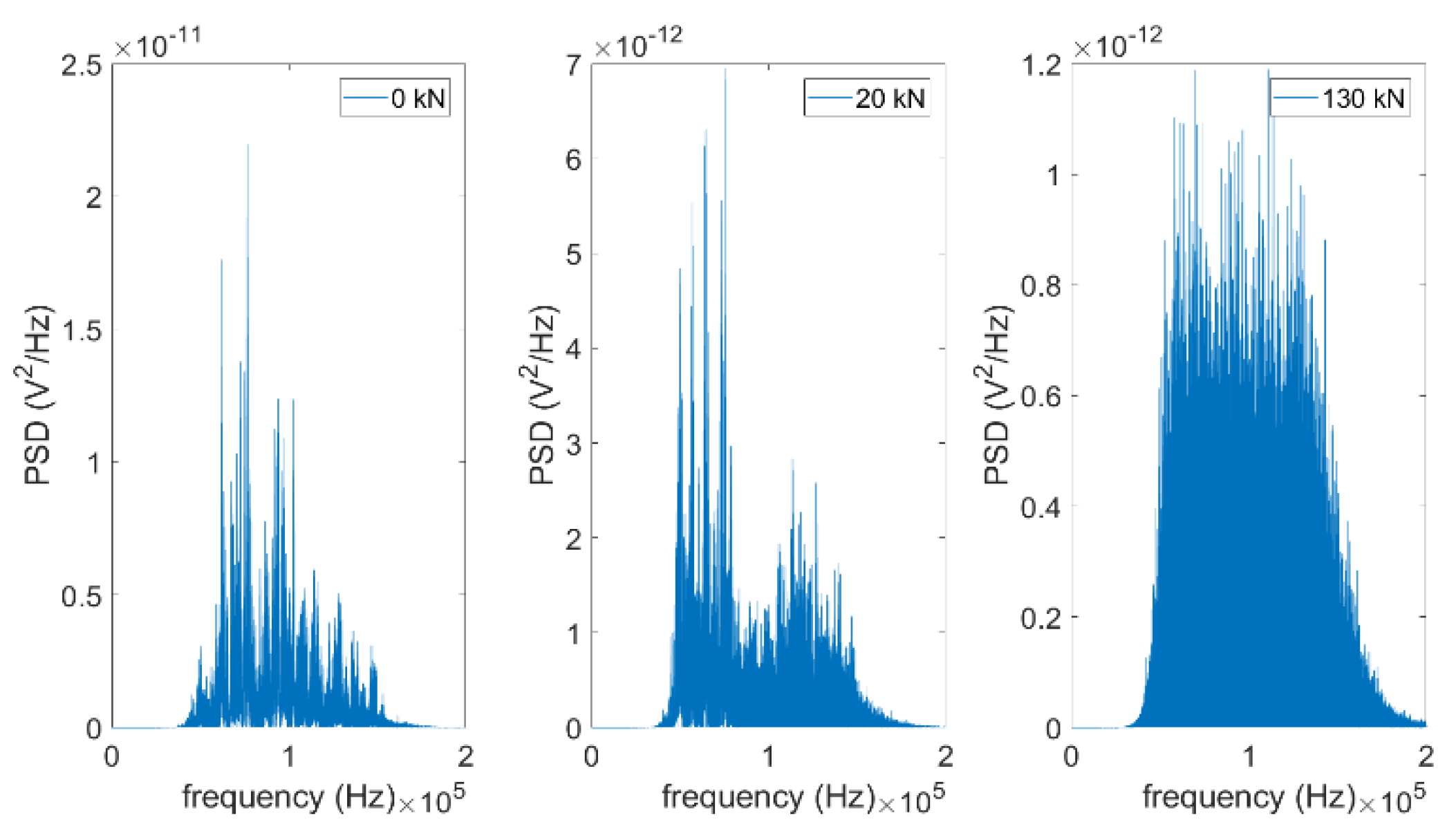

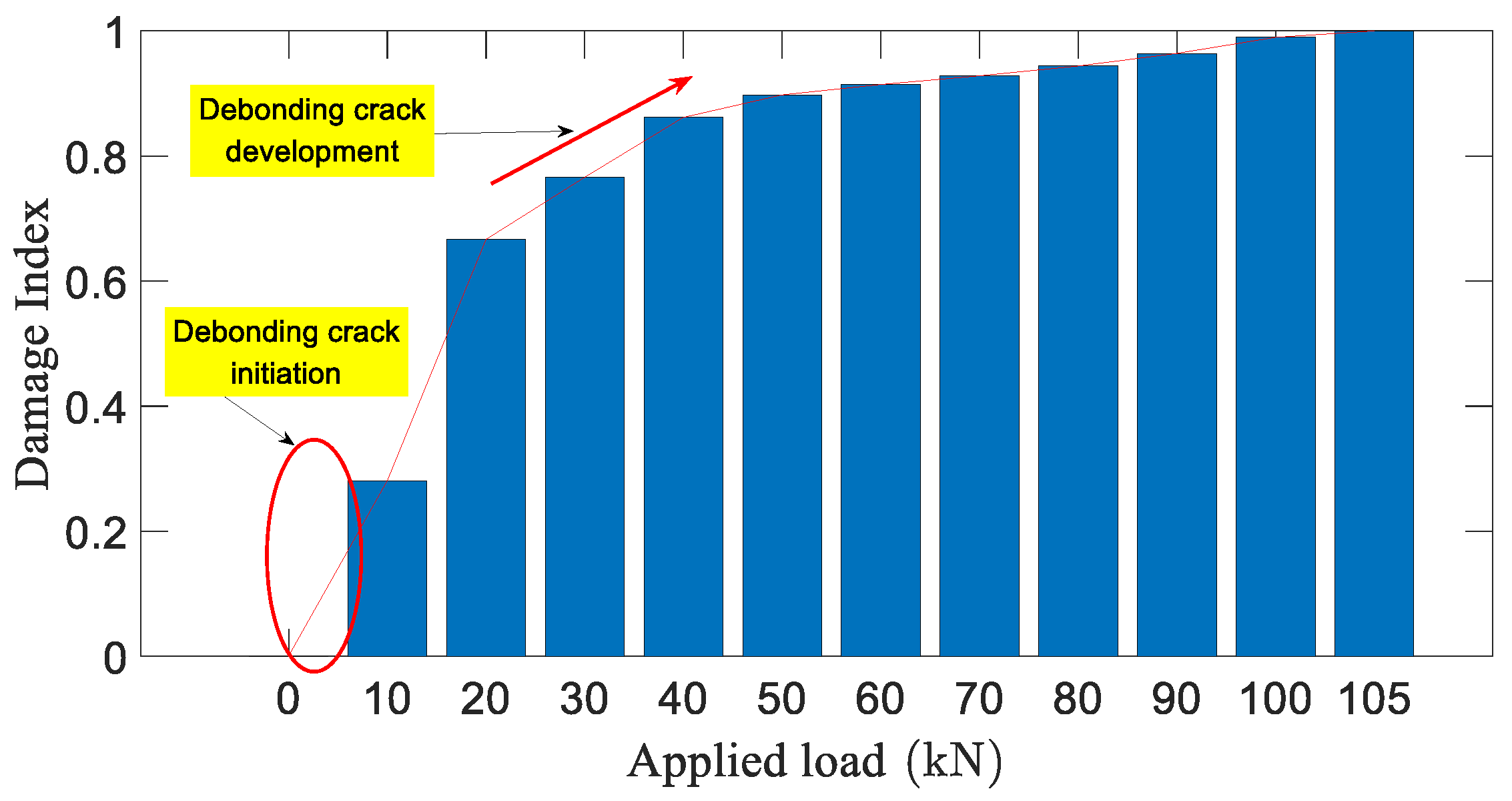
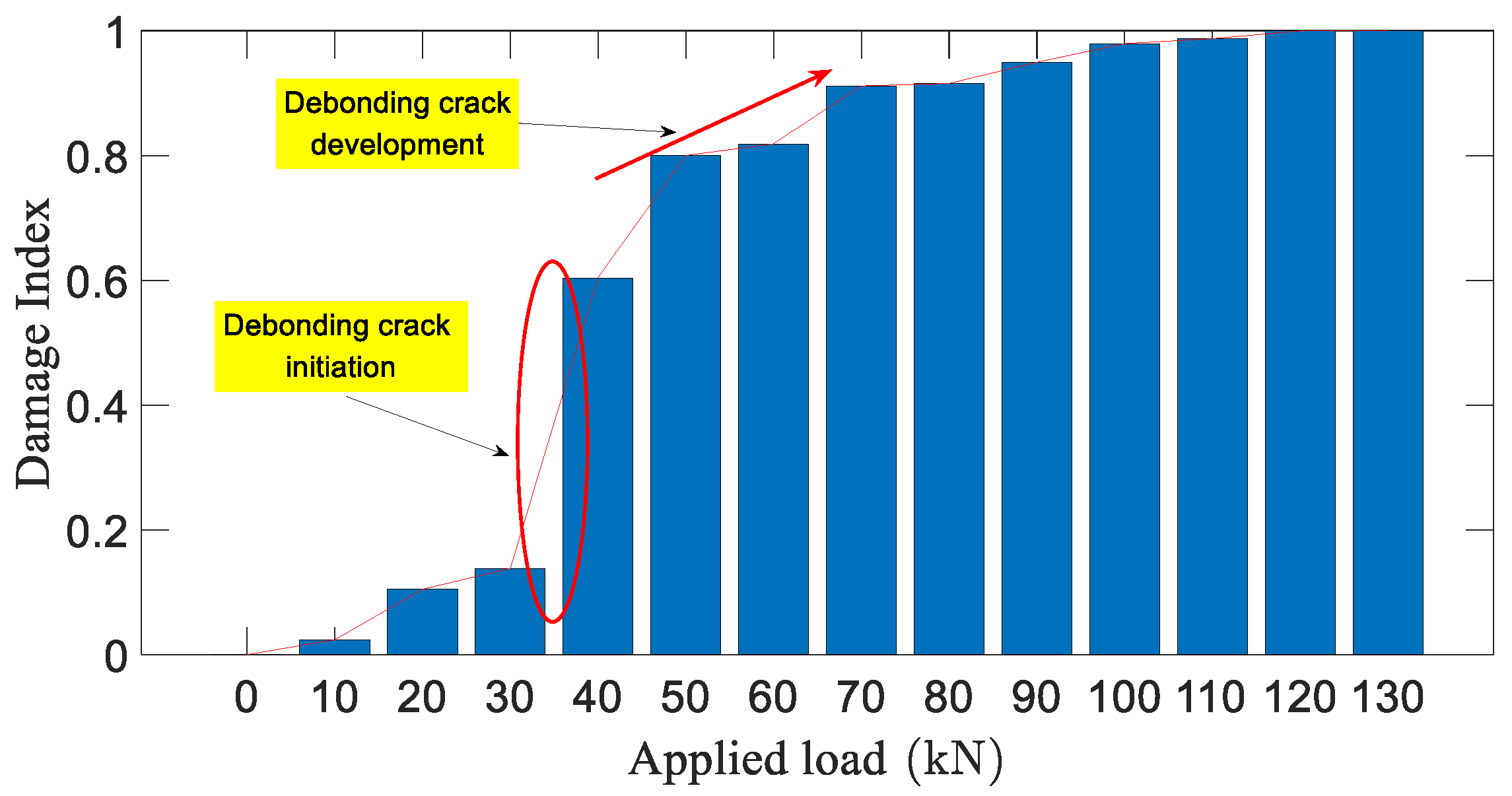
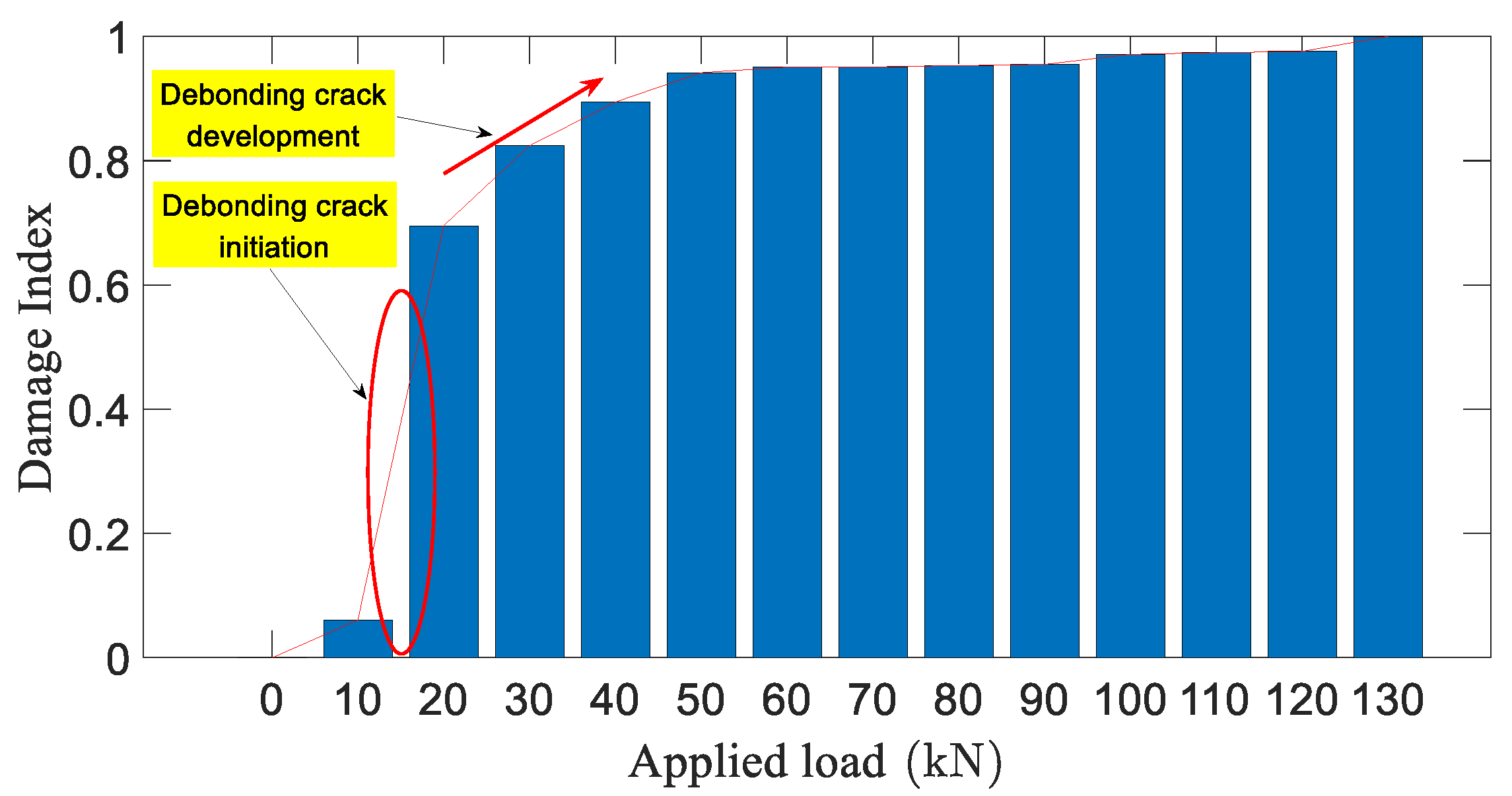
| Cement (kg/m3) | Water (kg/m3) | Sand (kg/m3) | Stone (kg/m3) | Water Reducing Agent (kg/m3) |
|---|---|---|---|---|
| 372 | 175 | 815 | 996 | 7.4 |
| Material Type | Tensile Strength (MPa) | Tensile Modulus (GPa) | Shear Strength (MPa) |
|---|---|---|---|
| CFRP plate | 2068 | 140 | - |
| Epoxy resin | 24~27 | 11.2 | 14~17 |
| Type | Diameter (mm) | Yield Strength (MPa) | Ultimate Tensile Strength (MPa) | Elastic Modulus (GPa) |
|---|---|---|---|---|
| Longitudinal distribution reinforcements | 16 | 400 | 540 | 201.9 |
| Steel stirrups | 8 | 335 | 445 | 200 |
| Specimen Designation | Tension End Cracking Load (kN) | Increased Range (%) | Bonded End Cracking Load (kN) | Increased Range (%) | Ultimate Load (kN) | Increased Range (%) |
|---|---|---|---|---|---|---|
| Beam 1 | 20 | - | 45 | - | 105 | - |
| Beam 2 | 30 | 50 | 125 | 177.78 | 130 | 23.81 |
© 2019 by the authors. Licensee MDPI, Basel, Switzerland. This article is an open access article distributed under the terms and conditions of the Creative Commons Attribution (CC BY) license (http://creativecommons.org/licenses/by/4.0/).
Share and Cite
Liu, Y.; Zhang, M.; Yin, X.; Huang, Z.; Wang, L. Debonding Detection of Reinforced Concrete (RC) Beam with Near-Surface Mounted (NSM) Pre-stressed Carbon Fiber Reinforced Polymer (CFRP) Plates Using Embedded Piezoceramic Smart Aggregates (SAs). Appl. Sci. 2020, 10, 50. https://doi.org/10.3390/app10010050
Liu Y, Zhang M, Yin X, Huang Z, Wang L. Debonding Detection of Reinforced Concrete (RC) Beam with Near-Surface Mounted (NSM) Pre-stressed Carbon Fiber Reinforced Polymer (CFRP) Plates Using Embedded Piezoceramic Smart Aggregates (SAs). Applied Sciences. 2020; 10(1):50. https://doi.org/10.3390/app10010050
Chicago/Turabian StyleLiu, Yang, Ming Zhang, Xinfeng Yin, Zhou Huang, and Lei Wang. 2020. "Debonding Detection of Reinforced Concrete (RC) Beam with Near-Surface Mounted (NSM) Pre-stressed Carbon Fiber Reinforced Polymer (CFRP) Plates Using Embedded Piezoceramic Smart Aggregates (SAs)" Applied Sciences 10, no. 1: 50. https://doi.org/10.3390/app10010050





